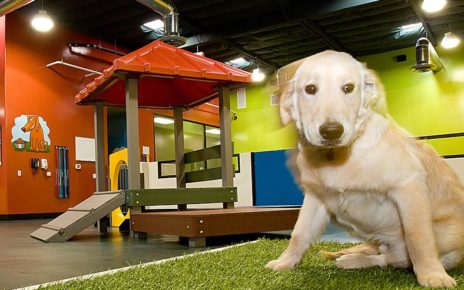There are many benefits that come from the enormous sacrifices required of those who serve in the United States Equipped Forces, and another of them is that U. H. veterans can offset the expense and hassles of senior medical care, senior housing and even the logistical chaos of death and burial. So if you are a veteran—or you’re caring for one—it’s well worth considering whether he or she qualifies for a complete host of benefits made available from the U. S. Section of Veterans Affairs (V. A. ).
What comes after is helpful tips designed to help you navigate the entire landscape of V. The. benefits and the myriad ways they can help older vets and the families.
V. A. Insurance info
While Medicare is a highly effective program in many ways, it still leaves up to fifty percent of an older adult’s medical care costs unpaid. It doesn’t cover some services and supplies, and their deductibles and copayments are hefty. For eligible experts, however, V. A. medical benefits can be one way to cover these unpaid expenses.
Interestingly, some veterans qualify for both. Even if you are also enrolled in Medicare insurance, you may be eligible for a the wide range of free or low-cost health proper care benefits provided by the V. A., which provides health care through its hospitals, clinics, nursing homes, pharmacies and doctors across the country.
An experienced eligible for care can receive it from any V. A. medical doctor or facility, but not all V. A. health care benefits are available to all veterans. The V. A. maintains a complex priority system, with the most benefits going to people with the greatest health or financial need.
Typically the Advantages of Vets in Chippenham new. Health Care
With Versus. A. health care, you may obtain a number of health care-related services that Medicare doesn’t cover, including:
Physical exams and other preventive care
Dental care
Long lasting in-home care
Long-term breastfeeding home residential treatment
Another reason to choose V. A. care over Medicare-covered care might be cost. V. A. copayments and deductibles are generally lower than Medicare’s, including for prescription drugs.
Who qualifies for V. A. medical benefits?
The answer to this question can be complex, so you may want to seek help and encouragement from a reliable relative or friend through the applying process.
In brief, veterans’ insurance plans are determined by a priority system. Anyone who served on active duty in the armed service may be eligible for at least some V. A. health care benefits. Someone who was in the reserves or the National Guard could also qualify if he or she was called up for active duty.
However, the V. A. health system can’t provide full look after all veterans, so they’ve set up a complicated priority system to determine veterans’ benefits and out-of-pocket costs. The system divides veterans into eight groupings, with the highest-priority groupings eligible for the most services at the cheapest costs.
The priority groupings are based on service-connected disability, other disability and income. Veterans with severe service-connected disabilities (i. at the. lifelong injuries or disabilities sustained in combat or training) get the largest coverage; veterans with less severe service-connected disabilities, or other disabilities combined with low income, are given mid-level priority; and experienced without disability or low income get the minimum amount of V. A new. care.
What exactly are priority V. A. medical benefits?
Every veteran is entitled to medical treatment through the V. A. health system, but certain veterans with service-connected afflictions are entitled to concern care. When a veterinarian enrolls in the Sixth is v. A. health system, the V. A. assigns him or her or her to there is no benefits called a priority party, numbered one through 8-10. The lower the amount of a veteran’s priority group, the higher top priority he or she gets in getting care.
This specific priority takes the form of earlier appointments, top priority in the timing of noncritical care, placement in local programs and proper care in a local service when the availability of care in which facility is limited.
Using Veterans Rewards for Senior Care
Several older grownups will choose assisted living eventually to ensure they have the treatment they need for the best possible quality of life in their senescence. For seniors who dished up in the Armed Makes or spouses of past military servicemen and women, there are veterans benefits available to help pay for this care—and the requirement today is greater than in the past.
According to official V. A. statistics, there are now more than 12. 4 million U. S. military veterans that are 65 or older. They will fought in World Battle II, the Korean Battle, the Vietnam War and the Persian Gulf War and guarded the homeland at bases throughout the country. They sacrificed, took on great risk and often put their neighbors’ protection before their own.
From the same time, long lasting care costs for seniors are soaring. The average twelve-monthly cost of grownup day health care is $17, 680, according to Genworth’s 2017 Cost Treatment Survey. A year in an assisted living community costs more than $45, 000 per year on average. And also a semi-private room in a nursing home will run you about $82, 125 on average. That’s more than the majority of America’s older veterans can manage on their own. What’s more, employee benefits do not pay for assisted residing, which can make all of it the more frustrating when it comes to creating ways to pay for senior care.
Fortunately, there are some V. A. benefits programs specifically made to help veterans purchase senior care, but it can require somewhat of effort to take full advantage of them. Here are some of the most comprehensive senior care benefit programs accessible to vets and their adored ones, as well as detailed instructions how to navigate this sometimes complicated landscape.
The way the benefits for senior care work
Presently there are three types of senior care benefits available veterans: Basic, Household and Aid and Attendance.
At the Basic level, all veterans who are at least 65 years old qualify for benefits, no matter their current residing situation. The Household profit may be the option for many who need only infrequent assistance with day-to-day activities. Finally, at the Support and Attendance level, experts unable to sustain an appropriate quality of life without help will get access to the assistance they need at an assisted living community.
The Aid and Presence program aims to help veterans and their spouses who need help performing activities associated with daily residing, including bathing, feeding, dressing and protecting themselves from everyday hazards. It is granted to veterans with both physical and psychological health ailments. There is also a component of the main benefit that provides cash for veterans or their spouses who are homebound.
A single of the nice things about the Aid and Attendance benefit is that it is paid in addition to veteran’s basic pensions, so it can make a large difference in the kind of proper care a veteran can manage. With both Household and Aid and Attendance benefits, the person must be eligible for a regular V. A. pension. Currently, a veteran or a veteran’s enduring spouse can pick either House or Aid and Presence benefits, but not both at the same time.
Support and Attendance and Housebound Benefits Eligibility
Generally speaking, Aid & Attendance and Housebound Benefits are available to veterans who had been on active military duty for at least 90 times (one which was during an active war period) and were discharged from service under conditions other than dishonorable. What’s more, Aid and Attendance benefits are often available to experienced who already receive a pension or to enduring spouses of veterans currently receiving this pension.
Several different circumstances that meet the criteria someone for Aid and Attendance benefits include:
The consumer either has concentric shrinkage of the eyes or is blind in both eyes.
Daily living activities cannot be completed without someone’s help.
The individual is bedridden.
A mental or physical handicap has resulted in a nursing home stay.
The following are conditions that can qualify a veteran or survivor for Household veterans benefits toward assisted living.
The Versus. A. has classified a single long term disability as fully disabling that simply leaves the person unable to leave home.
These condition applies, and the individual has other disabilities that are at least 60 pct disabling.
Besides the above conditions, vets and their survivors must adequately show that they’re struggling to pay for assisted living independently. The applicant will need to present several assertions and documents as facts of this.
While anyone who served in the U. S. military might be eligible for at least some V. The. benefits, not everyone authorize for Aid and Presence Benefits. There’s a relatively complicated system for figuring out who qualifies and how much additional money they will find in their retirement benefits each month.
Like all V. A. benefits, this one is prioritized based on service-connected disabilities, other disabilities and income. Experts who have important health conditions directly related to their service and little income or investments get top priority. Veterans who have serious service-connected disabilities come next, while low-income vets or those without handicap get mid-level priority.



